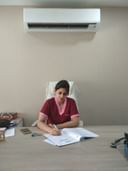Azoospermia - How Can It Be Treated Through IVF-ICSI?
Contrary to popular belief, infertility is not something that affects only women. Men can also suffer from infertility. Azoospermia is a condition where the semen ejaculated by a man contains no sperm cells or a very negligible amount of sperm cells. In such cases, it is almost impossible for a couple to conceive naturally.
There are three types of Azoospermia.
- Pre-testicular: In such cases, the patient has low levels of follicle-stimulating hormone and hence the testes cannot produce enough sperm.
- Testicular: In this type of Azoospermia, the patient has higher levels of follicle-stimulating hormones but has a disrupted feedback loop. This may be caused by hereditary disorders, side effects of a previous surgery, radiation or certain cellular disorders. Almost 50% of patients suffering from Azoospermia fall into this category.
- Post-testicular: In this condition, the sperm is produced from the testes in adequate amounts but does not get ejaculated. This is usually caused by a blockage in the post-testicular genital tracts because of an earlier vasectomy or a congenital defect.
The good news is that even men with Azzospermia can father children. IVF is the most preferred mode of treatment in such cases. In the case of IVF, semen from a man and eggs from a woman are combined in a laboratory to form embryos. These embryos are then transferred to the woman’s uterus. In the case of Azoospermia, IVF is aided by a technique known as Intracytoplasmic Sperm Injection or ICSI. Through this technique, the sperm cells are injected directly into the egg to fertilize it.
In the case of IVF with ICSI, the male partner will provide a semen sample on the same day that the eggs are harvested from the woman. This sample is checked in a laboratory for the presence of sperm cells. If present, the semen sample will be processed to separate the sperm cells from the plasma. This is then referred to as washed sperm. If no sperm cells are present in the semen sample, the doctors will extract sperm cells from the man’s testicles or epididymis.
A single sperm cell is then injected into each egg harvested from the woman. The egg should show signs of fertilization within a day or two. Thus, this process bypasses the natural fertilization process of sperm selection. Once the egg has been fertilized and is converted to an embryo, it is transferred to the woman’s uterus where it can grow and develop into a baby.



+1.svg)
